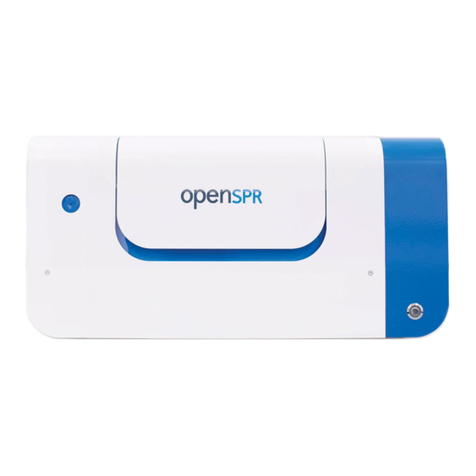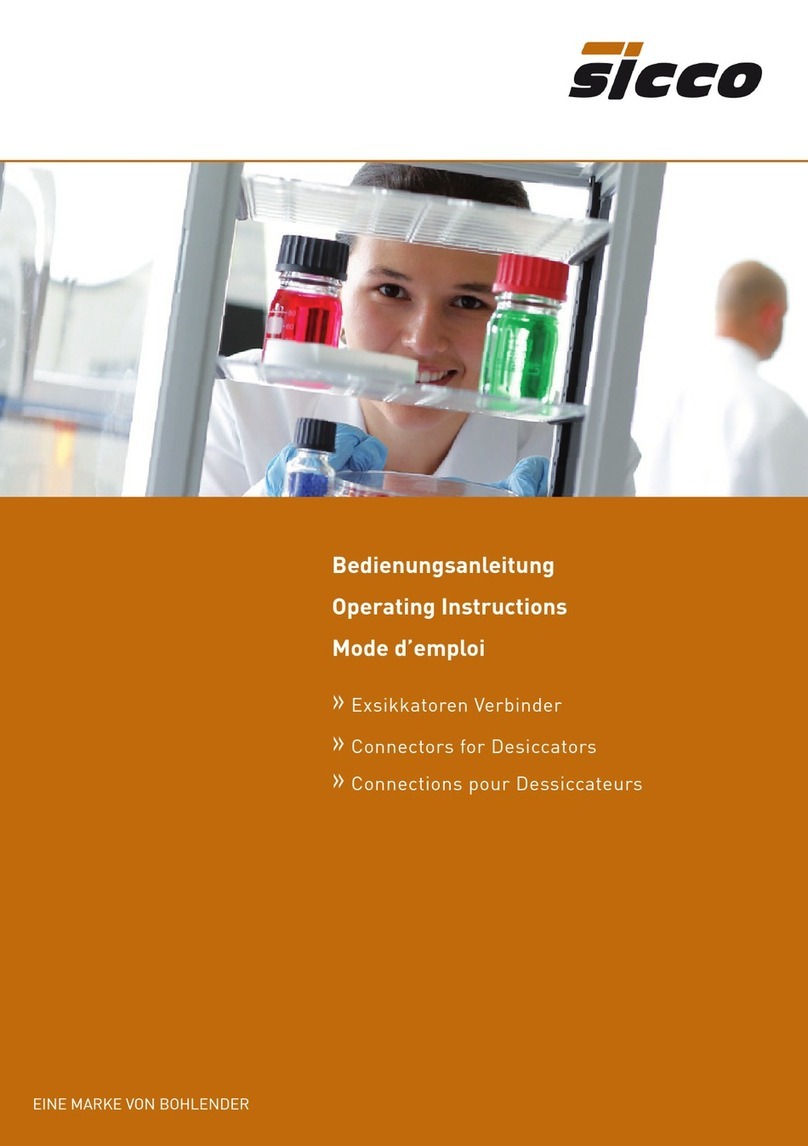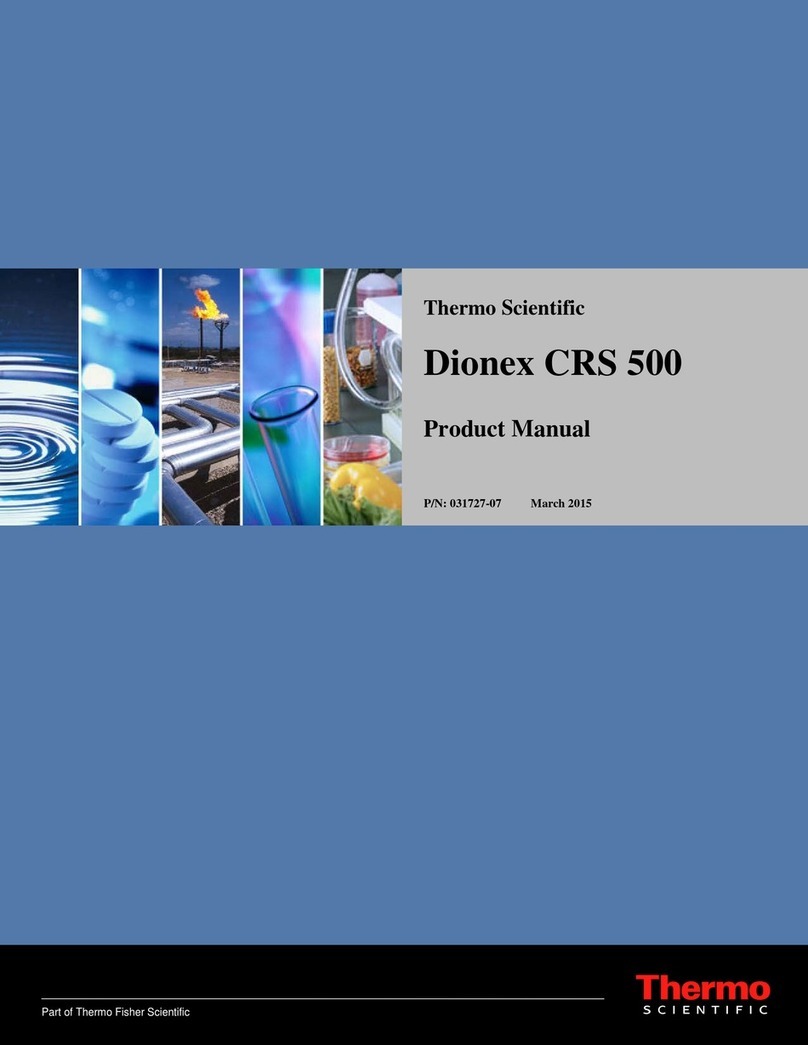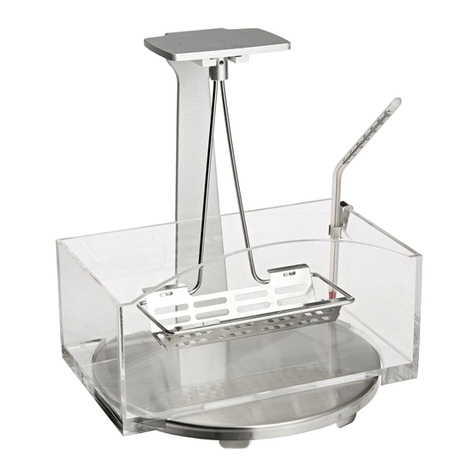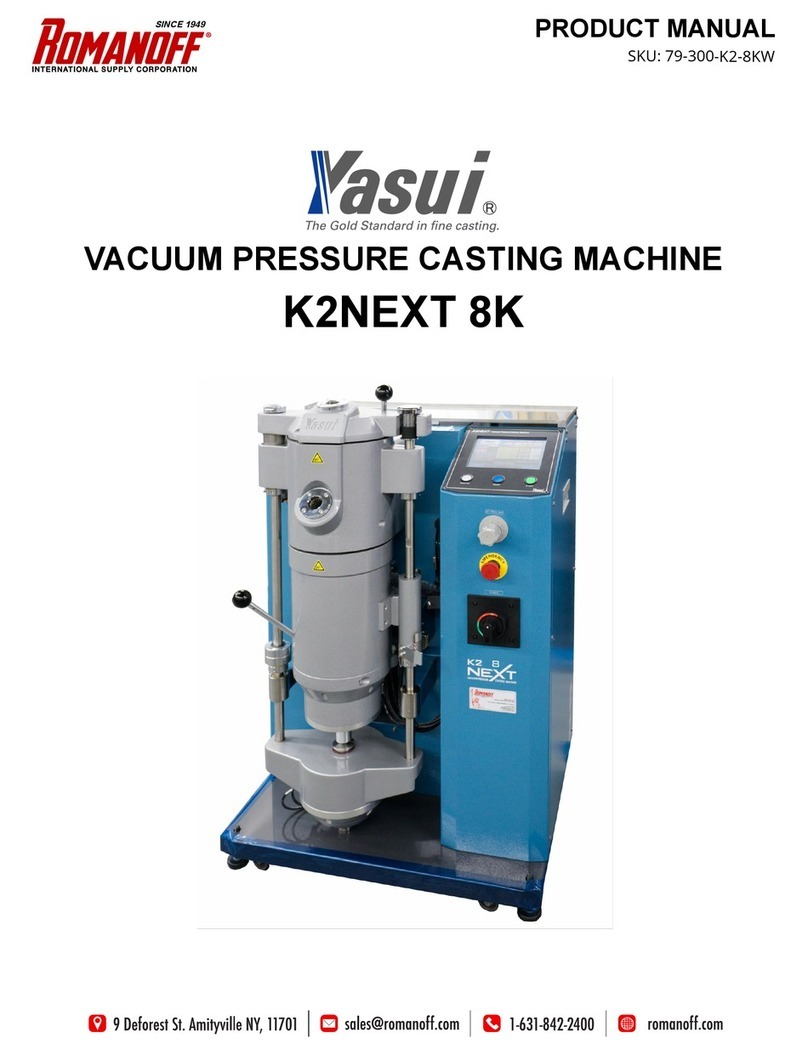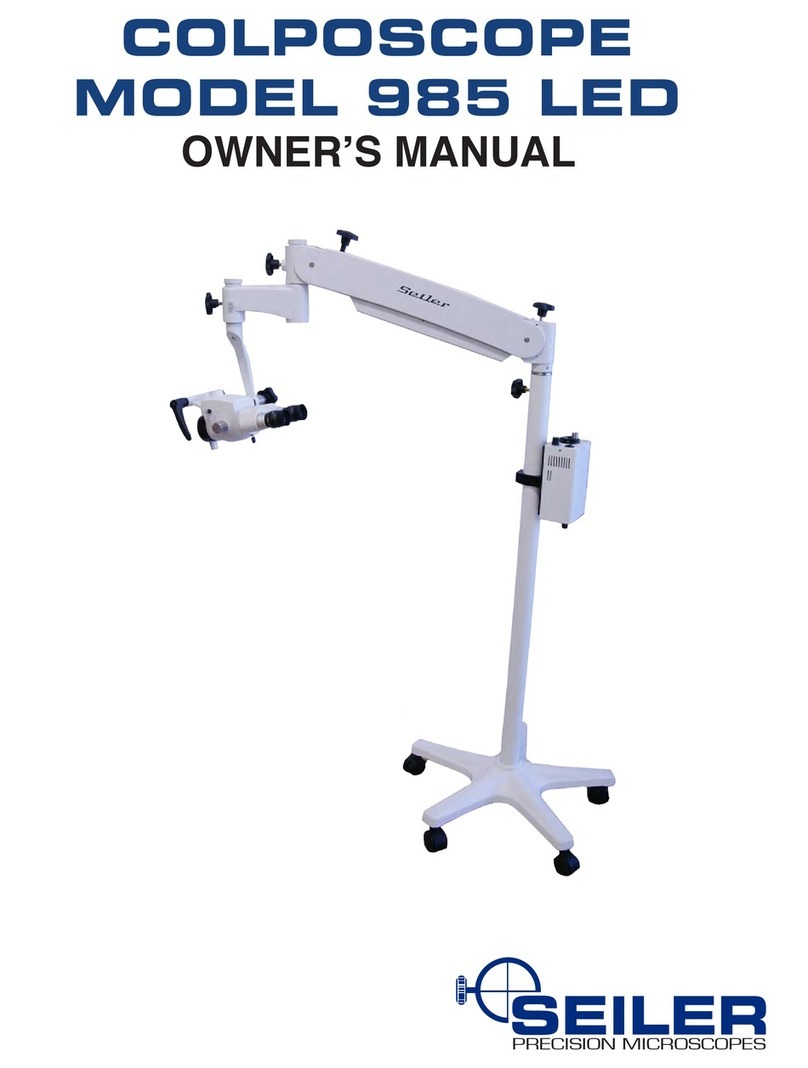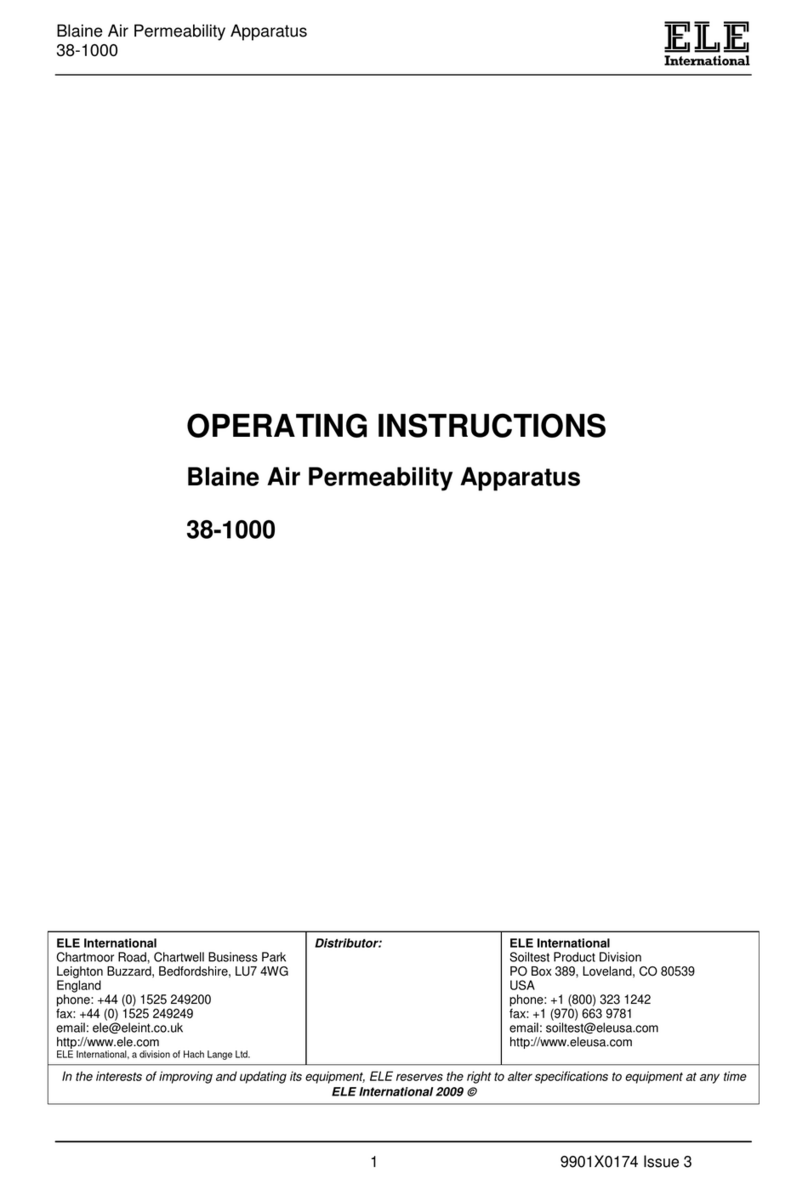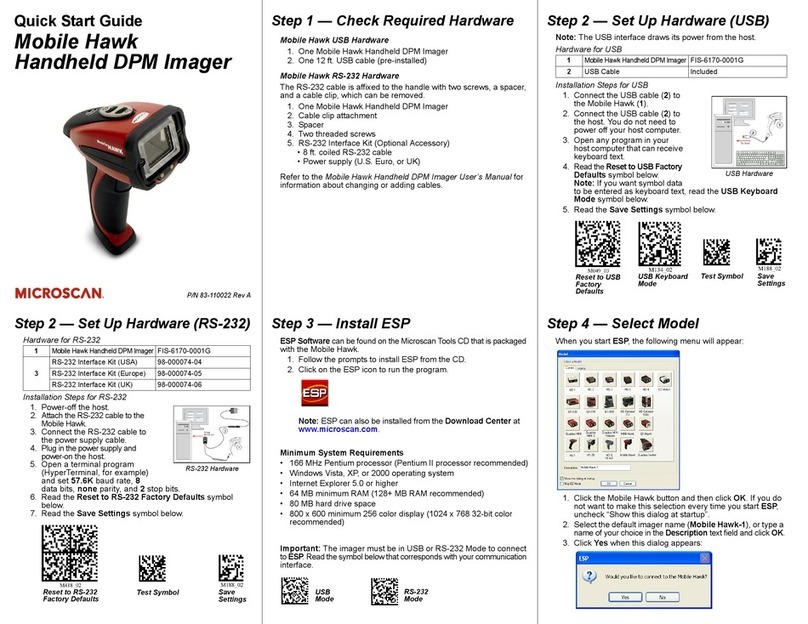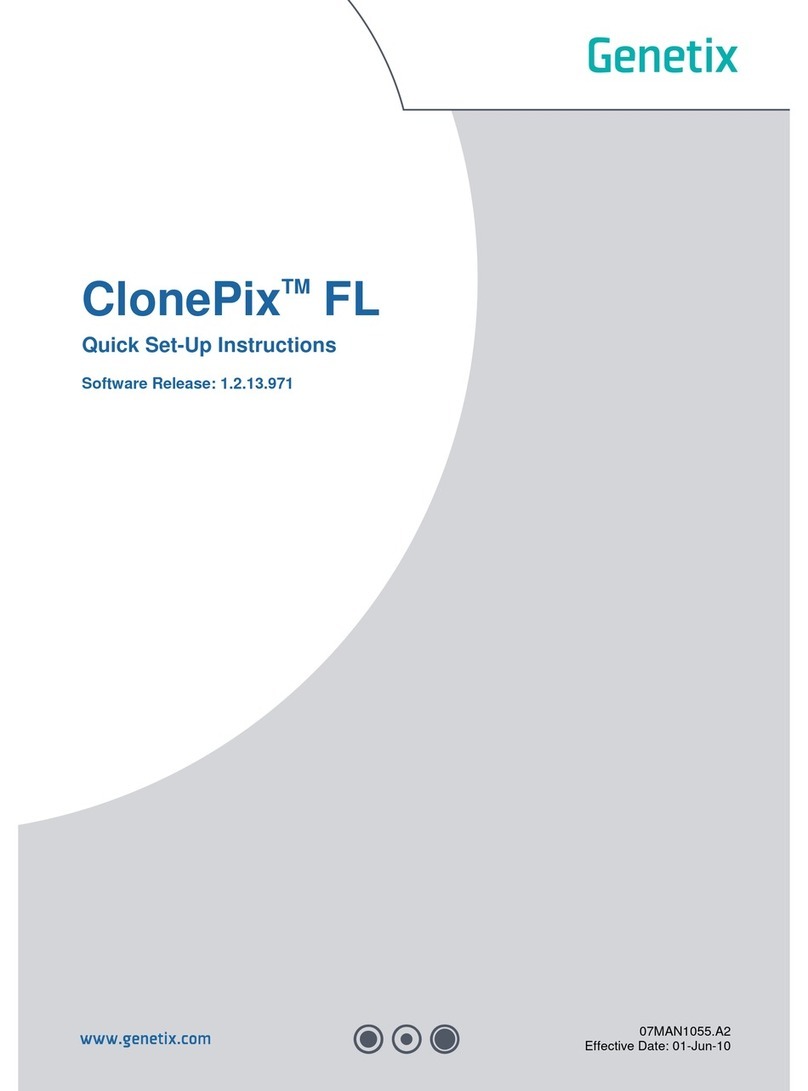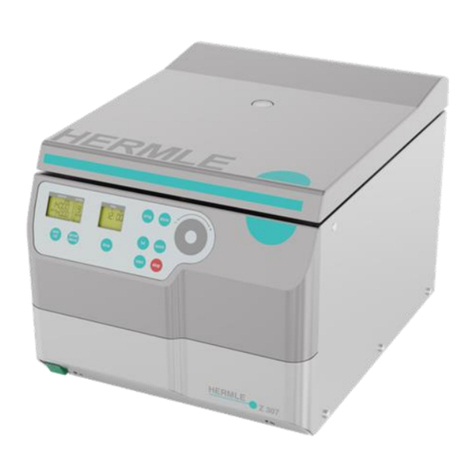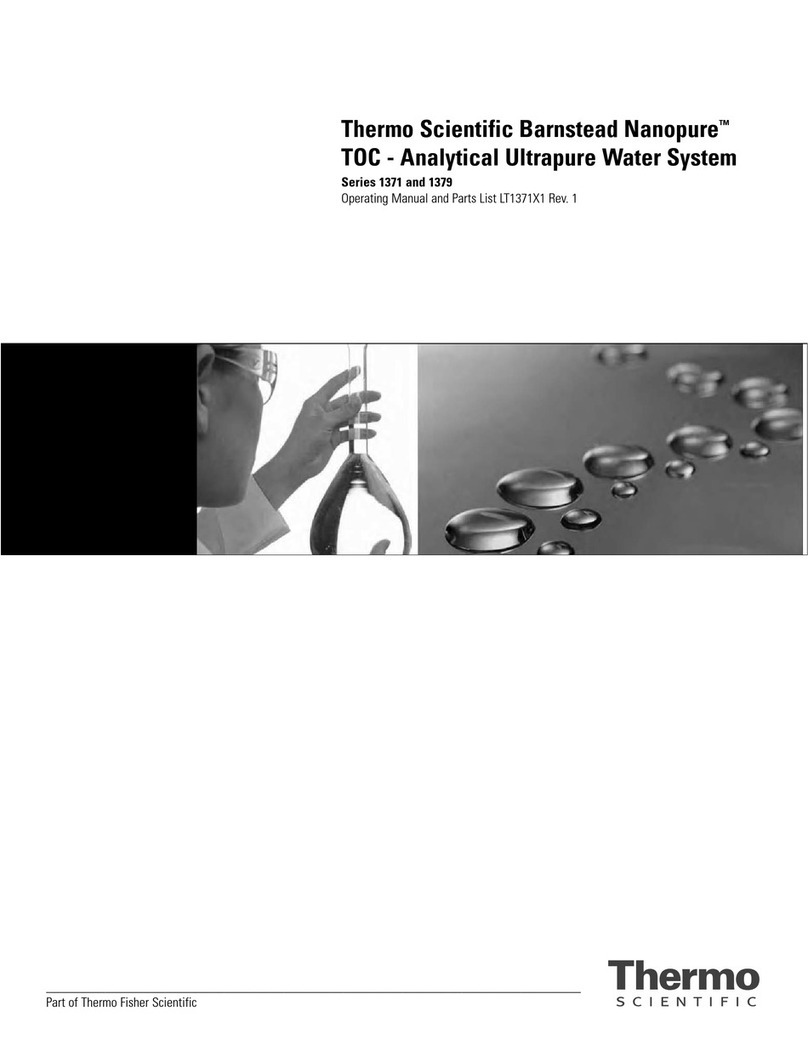Nicoya OpenSPR-XT Operation manual

NICOYA LIFESCIENCES
Operation and Service Manual V1.0
Last Updated: April 14, 2016 (V1.0)
This device complies with Part 15 of the FCC Rules. Operation is subject to the following two
conditions: (1) this device may not cause harmful interference, and (2) this device must accept any
interference received, including interference that may cause undesired operation. This device was
manufactured in Canada.

2
Table of Contents
Table of Contents ..................................................................................................................................................2
SAFETY AND PREPARATION FOR USE.....................................................................................................................4
OPERATING CONDITIONS .................................................................................................................................................6
SPECIFICATIONS .............................................................................................................................................................8
CHAPTER 1: GETTING STARTED ...................................................................................................................... 10
1.1 INITIAL EQUIPMENT SETUP................................................................................................................................10
1.1.1 Before any Steps are Taken....................................................................................................................10
1.1.2 Standard Equipment Supplies ................................................................................................................10
1.1.3 Unpacking of OpenSPR-XT™ Instrument................................................................................................11
1.1.4 Setting up Fluidic Connections ...............................................................................................................12
1.1.5 Turning on the OpenSPR-XTTM ...............................................................................................................17
1.2 OVERVIEW OF OPENSPR-XT™ INSTRUMENT COMPONENTS ...................................................................................20
CHAPTER 2: OPERATION GUIDELINES............................................................................................................. 25
2.1 REQUIRED ITEMS.............................................................................................................................................25
2.2 EXPERIMENTAL PROCEDURE ..............................................................................................................................25
2.2.1 Starting the System................................................................................................................................25
2.2.2 Instrument Priming and Obtaining References......................................................................................26
2.2.3 Loading a New Sensor Chip....................................................................................................................29
2.2.4 Bubble Removal & Cooling.....................................................................................................................32
2.2.5 Sample & Timeline setup .......................................................................................................................37
2.2.6 Shut Down Procedure ............................................................................................................................44
CHAPTER 3: DATA ANALYSIS USING TRACEDRAWER ...................................................................................... 46
3.1 DATA OUTPUT................................................................................................................................................46
3.2 TRACEDRAWER ANALYSIS .................................................................................................................................47
3.2.1 Import data into TraceDrawer ...............................................................................................................47
3.2.2 Data modifications.................................................................................................................................49
3.2.3 Kinetics Evaluation.................................................................................................................................54
3.2.4 Additional Resources..............................................................................................................................58
CHAPTER 4: OPENSPR-XTTM SYSTEM DETAILS ................................................................................................. 59
4.1 HARDWARE....................................................................................................................................................59
4.1.1 OpenSPR Unit.........................................................................................................................................59
4.1.2 XT Autosampler Unit ..............................................................................................................................62
4.2 SOFTWARE.....................................................................................................................................................67
4.2.1 Adjusting the Response Graph...............................................................................................................67
CHAPTER 5: FAQ & TROUBLESHOOTING......................................................................................................... 69
5.1 FREQUENTLY ASKED QUESTIONS ........................................................................................................................69
5.2 TROUBLESHOOTING .........................................................................................................................................69
CHAPTER 6: CLEANING AND MAINTENANCE .................................................................................................. 72
6.1 START-UP AND DIAGNOSTIC ROUTINES................................................................................................................72
6.2 INSTRUMENT MAINTENANCE AND CLEANING........................................................................................................73

3
6.3 SENSOR CHIP CLEANING ...................................................................................................................................74
6.4 INSTALLING A NEW FLOW CELL ..........................................................................................................................75
6.5 CHANGING THE SAMPLE LOOP ...........................................................................................................................75
CHAPTER 7: THEORY ...................................................................................................................................... 78
7.1 LOCALIZED SURFACE PLASMON RESONANCE.........................................................................................................78
7.2 BINDING KINETICS ...........................................................................................................................................79
7.2.1 Steady State Affinity Experiments..........................................................................................................80
7.2.2 Kinetic Affinity Experiments ...................................................................................................................81
7.2.3 Recommended Reading .........................................................................................................................81
7.3 REFERENCES...................................................................................................................................................82

4
Safety and Preparation for Use
Line Voltage
The OpenSPR™ operates from a 120/240 V, CSA Class 2 Approved power supply, with a frequency
between 50 and 60 Hz and 6 W power. Only use the power supply provided with your instrument.
The XT autosampler add-on operates from 95-250 V with a frequency between 50 and 60 Hz. The XT
addon must be connected to a suitable power supply with a correctly installed protective earth
conductor. Never use the system without a properly connected protective earth conductor.
Line Fuse
The line fuse is internal to the instrument and may not be serviced by the user.
Operate Only with Covers in Place
To avoid personal injury, do not remove the product covers or panels. Do not operate the product
without all covers and panels in place.
Serviceable Parts
The OpenSPR™ and XT add-on does not include any user serviceable parts inside. Refer service to
Nicoya Lifesciences Inc.
Additional Safety Notes
This unit has been thoroughly tested using standard biological buffer solutions such as Tris, PBS, and
Citrate buffer at neutral pH. Solutions at pH 2 to pH 12 have also been tested and can be used in the
system. Always evaluate the safety of the materials being used in the system before proceeding, and
utilize all appropriate and recommended safety precautions associated with the materials.
Do not stare into the LED as the bright light can damage the eye. Use appropriate safety eye
protection. Handle Sensor Chips inside of a fume hood with appropriate exhaust ventilation. Wear
personal protection equipment such as a laboratory coat, gloves, and safety glasses. In case of
insufficient ventilation, wear suitable respiratory equipment. Sensor Chips contain colloidal gold
particles which should not be inhaled, ingested, or contacted in any way.
This system is not water proof. Avoid actions which may result in liquid being spilled onto any part
of the system.
Always turn off the power to system when not in use.

5
It is recommended that the system be connected to a surge protected power Outlet. The XT
autosampler add-on must be connected to a suitable mains power supply with a correctly installed
protective earth conductor.
Removal of panels on the XT addon may expose users to lethal voltages. For that reason this should
only be done by a qualified service engineer.
Follow the recommended operating conditions below.

6
Operating Conditions
The following are the recommended operating conditions of the OpenSPR™ instrument and should
be followed for safety and performance purposes.
1. Read and follow all instructions provided.
2. For indoor use only.
3. For research use only.
4. Assure proper ventilation while in use.
5. Use this system only for its intended use. Use of the system for any other purpose may cause
unsafe situations.
6. Do not use the system if there is any visible damage.
7. OpenSPR™ and XT add on is not waterproof –do not spill liquids onto it and be very careful of
leaks.
8. Do not operate the system in the presence of strong magnetic fields.
9. Dust may interfere with the instrumentation, it is recommended that compressed air be used
to remove any dust that may accumulate in the system after completing tests and that the
unit is stored with a closed lid.
10. Handle Sensor Chips with tweezers and while
wearing gloves [Figure 0.1] and other appropriate
personal protection equipment. If skin contact with
the Sensor Chip occurs, rinse exposed area with
water for 15 minutes.
11. Tubing under stress –be very cautious when undoing
fluidic connections.
12. Carefully inspect tubing and connections prior to
testing.
13. The tubing in the peristaltic pump will wear over time. Contact Nicoya Lifesciences for a
replacement when needed.
14. It is the responsibility of the user to ensure the safety and appropriateness of the chemicals,
materials, and fluids being used in the OpenSPR™and XT add-on.
15. Treat sensors as hazardous waste after use and follow all local, state/provincial, and federal
regulations. Contact a licensed waste disposal specialist for proper disposal.
Figure 0.1 - Handle chips with gloves and
tweezers

7
16. Do not open the electronics compartment. Contact Nicoya Lifesciences Inc. if there is an
electrical problem and a customer service agent will assist you.
17. Ensure tubing Outlets are fed into an appropriate waste container before turning on the pump.
18. Turn off the OpenSPR™ immediately if a leak is detected.
19. The XT autosampler add-on houses a sharp needle. This needle may cause cutting injuries if
operating instructions are not followed.
20. Make sure that the covers and doors are closed before starting the XT autosampler add-on.
21. Make sure that the powerhas been switched off while replacingneedles or while servicing any
parts in the direct proximity of the needle.
22. Handle needles with care during replacement.
23. The solvents used in the instrument may be flammable and toxic. The room in which the
system is installed should be well ventilated to prevent accumulation of solvent vapours.
24. Use of open fire in the vicinity of this system must be prohibited.
25. Do not allow solvents to accumulate in the system. Perform periodic leak checks on supply
lines.
26. Dispose of waste (samples, solvents, device) in accordance with a regulated waste disposal
system.
This information is based on our present knowledge. However, this does not constitute a guarantee
for any specific product features and shall not establish a legally valid contractual relationship. Users
should make independent decisions regarding completeness of the information based on all sources
available. Nicoya Lifesciences Inc. shall not be held liable for any damage results from handling,
contacting, or using this product.

8
Specifications
Size and Weight
Open SPR
XT Add-on
Length
216 mm
Length
510 mm
Width
150 mm
Width
310 mm
Height
120 mm
Height
360 mm
Weight
1 kg
Weight
20 kg
Electrical Specifications
Open SPR
XT Add-on
Voltage
120/240 V
Voltage
95-240 V
Frequency
50/60 Hz
Frequency
50/60 Hz
Power
6 W
Recommended Software Requirements
Communication
2x USB 2.0 or higher
Platform
Windows 7 or higher
Microsoft .NET Framework
4.0
Memory
4 GB RAM
CPU
Dual Core
Data export format
.csv, TraceDrawer (.txt)
Operating Specifications
Flow Cell
100 µm height, 3 µL total volume
Flow Cell material
PDMS
Sensor Chips
Nanogold on glass
Flow rate range (approximate)
20-150 µL/min
Pump Type
Peristaltic

9
Refractive index resolution
10-4 –10-5 RIU
Refractive index drift per 5 min
10-5 RIU
Temperature Sensitivity
6.9 x 10-5 RIU/oC
Sample Injection
Fully automated, 100 µL
Temperature at sensor
Room temperature
Temperature for sample storage
4°C - 20°C
Channel
Single
Sample format
96-well microplates
Sample capacity
2 microplates

10
Chapter 1: Getting Started
This chapter provides instructions for unpacking, checking, connecting and using the OpenSPR™ and
XT add-on.
1.1 Initial Equipment Setup
1.1.1 Before any Steps are Taken
1. Read the entire Safety and Preparation for Use section of this manual before starting any set
up procedure. DO NOT PROCEED TO USE THE INSTRUMENT IF YOU SUSPECT IT HAS BEEN
MODIFIED OR DAMAGED OR IF YOU ARE UNSURE OF THE SAFETY OF THE INSTRUMENT.
2. Read and follow all installation and operation instructions in this manual to ensure that the
performance of this instrument is not compromised.
3. Open the boxes and inspect all components of the OpenSPR-XT™system.
4. Report any damage to Nicoya Lifesciences Inc. immediately.
5. Compare the contents of the shipping boxes against your original order and the checklist
below. Report any discrepancies to Nicoya Lifesciences Inc. immediately.
1.1.2 Standard Equipment Supplies
OpenSPR™ instrument with XT Autosampler Add-on
Cables:
o2 power adapters (for OpenSPR and XT add-on)
o2 USB connectors
1 Sample holder with blank Sensor Chip installed
Tubing for Inlet and Outlet
2 Drain Hoses
2 Flow Cells (1 installed and 1 replacement)
1 500 mL Buffer Bottle
1 250 mL Wash Bottle
1 Sampler Needle (installed)
1 USB Drive containing OpenSPR™ software set-up files, manual and other relevant
documentation
1 Allen Key

11
Tools for autosampler maintenance
Laptop (optional)
1.1.3 Unpacking of OpenSPR-XT™Instrument
1. Read the OpenSPR-XT™Operation Manual.
2. Carefully remove all components from boxes. When removing the XT autosampler from its
box, ensure to keep it in an upright position (it is recommended to use 2 people to do this).
3. Set the XT autosampler on a stable, level surface ensuring that the cooling fan at the back of
the instrument is not obstructed and has proper ventilation.
4. Remove all tape and packaging found externally on the OpenSPR™ and XT autosampler.
5. Remove the cover of the XT autosampler (highlighted in yellow in Figure 1.1) by following the
below procedure:
1. Press the two black buttons on either side (top) of the XT autosampler simultaneously.
Figure 1.1 Location of two black buttons on the XT autosampler to remove cover. The cover is highlighted in yellow.
2. Gently pull the cover towards you, removing it fully from the instrument.

12
Figure 1.2 Cover completely removed from the XT autosampler.
6. Remove all tape and packaging internal to the XT autosampler.
7. Place the OpenSPR™on top of the XT autosampler such that the OpenSPR™is covering the
open slot on top of the XT and it is stable [Figure 1.3].
Figure 1.3 OpenSPR placed on top of XT autosampler in a stable position.
1.1.4 Setting up Fluidic Connections
1. With the cover still removed from the XT autosampler, remove the sample cooling cover from
inside the sample compartment for easier installation of fluidics. To do this, gently pull the
cooling cover directly out from the instrument [Figure 1.4].

13
Figure 1.4 How to remove sample cooling cover.
2. Fill the 250 mL Wash Bottle with a solution of 80% isopropanol (v/v in DI water).
3. Insert the Wash Bottle into the holder located on the left side of the sampling compartment,
and insert the wash tube into the bottle, ensuring it reaches the bottom [Figure 1.5]. The wash
tube is the larger semi-opaque tube located at the top left near the back of the sampling
compartment.
Figure 1.5 Wash bottle installed in the wash bottle holder with tubing inserted.
4. There are two tubes protruding from the bottom of the OpenSPR. Insert those tubes down
through the slot located on the top plate of the XT autosampler [Figure 1.6]. The OpenSPR
should rest overtop of this slot on the XT autosampler.

14
Figure 1.6 Insert tubes from bottom of OpenSPR down through the slot on top of the XT autosampler.
5. These two tubes will need to be connected to the valve inside of the sample chamber [Figure
1.7]. The two tubes should be labelled “1” and “6”. The tube labelled “1” needs to be
connected to valve position 1, and the tube labelled “6” needs to be connected to valve
position 6 [Figure 1.8].
Figure 1.7 Valve located inside of sample chamber.

15
Figure 1.8 Close up of valve with corresponding valve positions.
To connect them, two nuts and two ferrules are provided as shown in Figure 1.9. The ferrules
may be opaque as shown in the figure or clear. They may already be installed on the tubing,
or provided separately in a bag.
Figure 1.9 Nuts and ferrules provided to connect Pump and Flow Cell tubing to valve.
If the nuts are ferrules are provided separately, insert the tubing through the large end of the
nut, followed by the larger end of the ferrule as shown in Figure 1.10.
Figure 1.10 Proper installation of nut and ferrule on end of tubing.
With the nut and ferrule on the tube, insert the tube into the appropriate valve position (1 =
valve position 1, 6 = valve position 6), guiding it in at the appropriate angle to the valve fitting.
Place the end of the tube such that it seats firmly against the back of the valve fittingand screw
in the nut clockwise, tightening it fully by hand. Ensure the tubing stays fully seated when

16
tightening the nut –this is essential to maintain zero dead volume. If the threads of the nut
are not catching on the valve fitting, adjust the angle of the nut.
To ensure that thetubing is secured to the valve, gently pull back on the tubingafter the fittings
have been tightened - the tubing should remain fixed in place. Ensure both tubes are installed
in the correct positions referencing Figure 1.8. Upon initial fill of the system, inspect the valve
for any leaks.
6. Replace the cover of the XT autosampler by sliding it back into place.
7. Connect the two drain hoses (large semi-opaque tubing) provided to the openings at the front
of the XT autosampler (bottom-left) [Figure 1.11]. To do so, firmly push the end of the tubing
into the holes.
Figure 1.11 Drain hoses installed in XT autosampler.
8. Insert the free ends of the drain hoses into a waste container (not provided) at a level below
the autosampler. The hoses will drain a combination of the 80% isopropanol wash, the running
buffer and water. Ensure to use an appropriate container that is compatible with these
solutions.
9. Connect the Inlet tubing (provided) to the Inlet port located on the left side of the OpenSPR™
[Figure 1.12]. The connector consists of a hex nut and ferrule which are preinstalled in the
fitting detail (the bulkhead), as shown in Figure 1.13. With the hex nut loosened slightly, fully
insert the tubing into the hex nut so it seats firmly against the back of the fitting detail. Then,
tighten the nut fully by hand, ensuring the tubing stays fully seated –this is essential to
maintain zero dead volume. To ensure that the tubing is secured to the port, gently pull back
on the tubing after the fitting has been tightened - the tubing should remain fixed in place. If
it cannot be tightened sufficiently by hand, tighten as much as possible by hand and then use
a wrench to turn the nut an additional ¼ turn past the point at which the ferrule starts to grab
the tubing.

17
Insert the free end of the Inlet tubing into the running buffer container (500 mL glass bottle
with red cap). The running buffer container should be placed on the workbench beside the XT
autosampler. Do not place the running buffer container on top of the XT autosampler as it may
spill and damage the instrument.
Figure 1.12 - Ports on the left side of the OpenSPR™ instrument. The running buffer is connected to the left port (Inlet) and the
waste container to the right port (Outlet). The “Sample Loop” ports are only used if the Sample Loop is installed on the outside of
the instrument. By default it is installed inside the instrument
Figure 1.13 - Inlet and Outlet port tubing connection detail
10. Install the Outlet tubing using the sameprocedure as above. Insert the free end into the waste
container (provided). You may use your own waste container in place of the one provided.
11. Place a second waste container (not provided) below the tubing that exists through the hole
labelled “Waste” [Figure 1.12]. This is the overflow from when the Sample Loop is filled. A
small petri dish or beaker will be sufficient to catch the overflow that drips out of the Sample
Loop waste line.
1.1.5 Turning on the OpenSPR-XTTM
1. Install the OpenSPR-XT™software onto your computer if a computer was not provided with
your instrument. Ensure that the computer meets the specifications listed above. Follow the
instructions in the “Software Installation” document (separate). The software installation files
are on the provided USB Drive.

18
2. Connect the power cable to the OpenSPR™instrument [Figure 1.14] and plug it into an
appropriate power outlet (a surge protected outlet is recommended).
3. Connect the computer to the OpenSPR™instrument via the USB cable.
Figure 1.14 - Back of OpenSPR™ instrument contains connections for power and USB cables, and power switch.
4. Connect the power cable to the XT autosampler [Figure 1.15] and plug it into an appropriate
power outlet (a surge protected outlet is recommended).
5. Connect the computer to the XT autosampler via the USB cable.
Figure 1.15 Back of XT autosampler with USB Connection, Power Connection and Power Swtich.
6. Ensure the XT autosampler cover is ON and the sample compartment door is CLOSED before
powering on the instrument.
7. Switch ON the OpenSPR™ power switch located at the back of the instrument [Figure 1.14].
The blue LED on the front of the instrument should turn on [Figure 1.16].
8. Switch ON the XT autosampler power switch located at the back of the instrument [Figure
1.15]. The green LED on the front of the instrument should turn on [Figure 1.16].
Power Switch
Power Cable
USB Cable

19
Figure 1.16 Power LEDs located on the front of the OpenSPR and XT autosampler.
9. Start the OpenSPR-XT™ software by double clicking on the “OpenSPR” desktop icon to connect
the device.
10. Read the OpenSPR-XT™ Operation Manual entirely before operation.

20
1.2 Overview of OpenSPR-XT™Instrument Components
The OpenSPR-XT™instrument consists of an OpenSPR unit and an XT autosampler unit [Figure
1.17]. The OpenSPR unit contains the optical detection system, while the XT autosampler unit
contains the majority of the fluidics system as well as the sample storage area. An overview of
the instrument components are described in this section, and more details on the hardware
operation can be found in Section 4.1.
Figure 1.17 OpenSPR-XT™instrument consists of OpenSPR unit and XT autosampler unit.
The OpenSPR unit consists of an optical detection system, a sensor chip, and a fluidics system
that interfaces with the XT autosampler [Figure 1.18].
Table of contents
Other Nicoya Laboratory Equipment manuals

